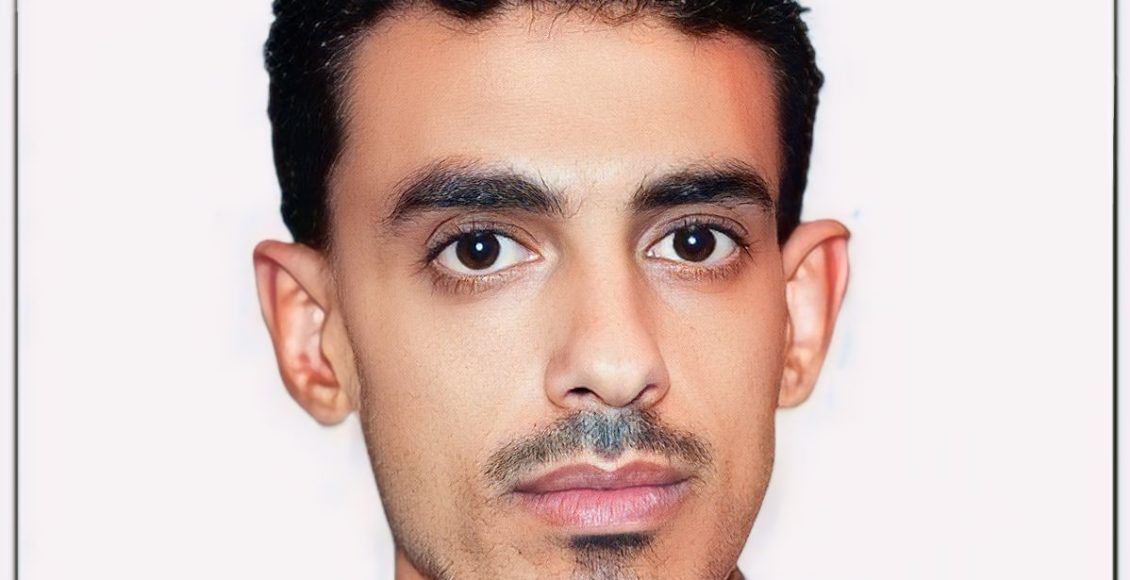
Ahmed Abdullatif Al-Shaibani
Time of violation: 16/02/2016
Place of violation: Taiz
Type of violation: killing
The perpetrator of the violation: Houthi group ‘Ansar Allah’
In his first press coverage with the channel that hired him, the cameraman Ahmed Al-Shaibani himself was the video material. After he was captured by the lens of one of his colleagues falling dead in the middle of the street by Houthi snipers, on February 16, 2016.
Ahmed Abdullatif Al-Shaibani, 30, was contracted with the internationally recognized government’s Yemen satellite channel, and in February 2016 he went with a group of male and female journalists to cover the armed clashes that were taking place between the popular resistance forces backed by the government’s army and the gunmen of the Houthi group “Ansar Allah”, in Al-Hasseb area, west of Taiz city.
Free Media Center for Investigative Journalism, documented testimonies of the journalists who went to cover the battles along with Al -Shaibani. When they arrived, Ahmed Al -Bokari confirmed: “Colleague Abdulaziz Al -Thubhani and us were targeted by the sniper centered on Rabbits Hill”
“Rabbits” is a hill located west of the city of Taiz, overlooking Al-Hasseb Street. In 2016 the Houthis were stationed there in addition to their position on high buildings overlooking the Muroor Street, specifically the place from which the passers-by cross the street to the safe side.
After covering the clashes and the fire that broke out in one of Hazza Taha’s factories in the same area, journalist Afaq Al-Haj says: “We had to cross the street to get to the other side and leave the area safely.”
Journalists Ahmed Al-Bokari and Abdulaziz Al-Thubhani first crossed the place to the opposite side , while Ahmed Al-Shaibani, along with journalists Afaq Al-Haj and Naaem Khaled, were preparing to cross fast. Al-Thubhani said: “I thought of documenting the presence of female journalists, a great scene and a powerful picture of the reality of the Yemeni media and the struggle of Yemeni women journalists at this time.”
As they were crossing the street, Afaq says: “I heard a colleague screaming Ahmed… Ahmed…. I didn’t know what happened?” she adds: “After crossing to the other side, I turned and saw him – Ahmed Al-Shaibani- was lying on the ground with blood coming from his head.”
The Houthi militia shot him with two direct bullets in the head, causing him falling a martyr,” said Al-Thubhani, who captured the scene of Al-Shaibani’s sniping. His colleague Al-Bokari confirmed: “The sound of a sniper’s bullet penetrating the head of colleague Ahmed Al-Shaibani is still ringing in my ears until today.”
The sniping continued, while Ahmed Al-Shaibani lying on the ground « a group of resistance gunmen who existed there tried to pull Ahmed from the middle of the sidewalk, it was a dangerous risk , and they managed to drag him to one of the military cars and take him to Al-Rawda Hospital, but he had already died».
Abdullatif Al-Shaibani, Ahmed’s father, went to the hospital immediately after the news of his son’s death. He told the Free Media team for investigative journalism, that he went to take his son’s body “but they refused until the legal procedures are completed. ” The next morning Abdullatif took his son’s, Ahmed, body to the village cemetery. He pointed out: «I did not report to any party about the incident because he was targeted by the Houthi group and was not previously subjected to threats.”
The Public Prosecution did not play its role in investigating the killing of journalist Ahmed Al-Shaibani. However, the Criminal Investigation Department prepared an 11-page criminal report, which we obtained, the report contains 12 photographs showing the location, shape and size of the victim’s injury, and some details of the murder.
*Free Media for investigative journalism calls on fellow journalists, activists and human rights organizations to advocate for the cases of Yemeni journalists and activists who have been subjected to violations in the past years, and to work to activate justice and hold the perpetrators of these violations accountable
Note
This brief summary is part of the “For the Truth” project, within which an in-depth report on the situation will be published during the current year 2024.

